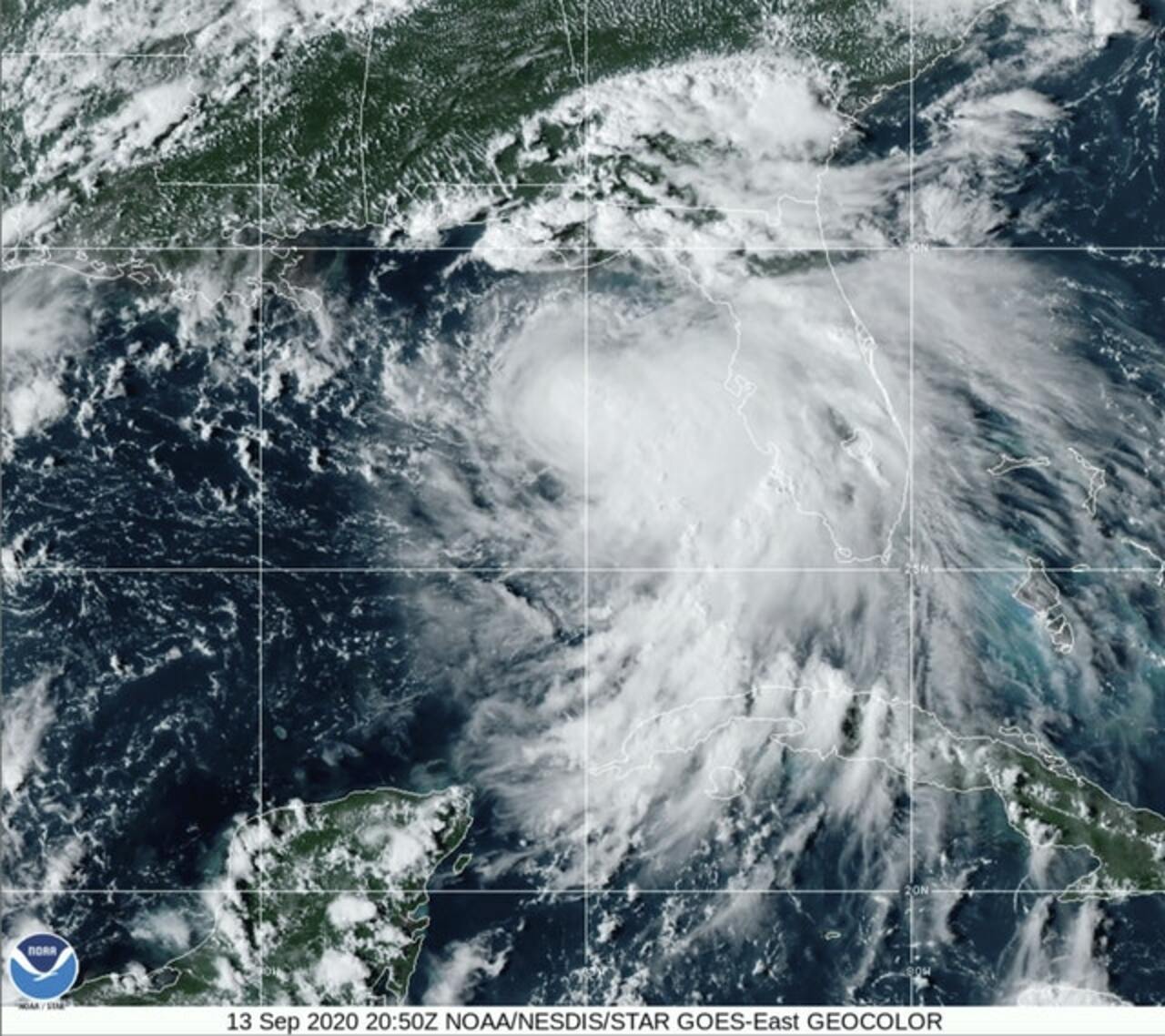
Residents on US Gulf Coast watch as Hurricane Sally tracks towards the coast
Sally is expected to become a hurricane later today and reach the coast by tomorrow.
by Press AssociationHURRICANE SALLY, one of five storms lined up across the Atlantic, is churning towards the Louisiana-Mississippi coast with rapidly strengthening winds of at least 90mph and the potential for as much as 2ft of rain that could bring severe flooding.
Storm-weary Gulf Coast residents rushed to buy bottled water and other supplies ahead of the storm, which was expected to reach Louisiana’s south-eastern tip around daybreak on Tuesday and make its way sluggishly northwards into Mississippi on a path that could threaten the New Orleans metropolitan area and cause a long, slow drenching.
Forecasters said it could be a Category 2 hurricane with winds of 105mph by the time it nears the coast, and it could be Louisiana’s second pounding from a hurricane in less than three weeks.
For only the second time on record, meteorologist Philip Klotzbach said, five tropical cyclones were churning simultaneously in the Atlantic basin.
In addition to Sally were Hurricane Paulette, which passed over a well-fortified Bermuda today and was expected to peel harmlessly out into the North Atlantic, and Tropical Storms Rene, Teddy and Vicky, all of them out at sea.
Sally’s sluggish track could give it more time to drench the Mississippi Delta with rain and push storm surge ashore.
People in New Orleans watched the storm’s track intently. A more easterly course could bring torrential rain and damaging winds to Mississippi.
Even with a push towards the east, New Orleans, which is on Lake Pontchartain, will be in the storm surge area, said University of Miami hurricane researcher Brian McNoldy. He said New Orleans “should be very concerned in terms of track”.
The National Hurricane Centre forecast storm surges of up to 11ft, including 4ft to 6ft in Lake Pontchartrain and 6ft in Mobile, Alabama, a city of about 189,000 people.
In eastern New Orleans, drainage canals were lowered in anticipation of torrential rains, mayor LaToya Cantrell said.
New Orleans police were put on 12-hour shifts, and rescue boats, barricades, back-up generators and other equipment were readied, Police Superintendent Shaun Ferguson said.
On August 27, Hurricane Laura blow ashore in south-western Louisiana along the Texas border, well west of New Orleans, tearing off roofs and leaving large parts of the city of Lake Charles uninhabitable.
The storm was blamed for 32 deaths in the two states, the majority in Louisiana.
Other Gulf Coast states urged residents to prepare for Sally.
Mississippi governor Tate Reeves said the hurricane could dump up to 20 inches of rain in the southern part of the state.
Shelters opened, but officials urged people who are evacuating to stay with friends or relatives or in hotels, if possible, because of coronavirus.
People in shelters will be required to wear masks and other protective equipment, authorities said.
Alabama governor Kay Ivey closed beaches and called for evacuations.